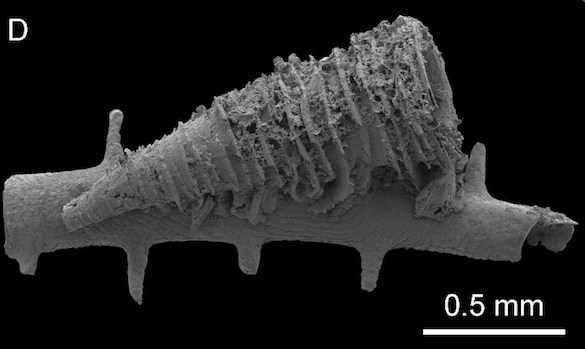 In the summer of 2018 I traveled to Wales for a conference in Cardiff. Immediately afterwards I visited my dear fiends Caroline and Tim Palmer in Aberystwyth, and they gave me a tour of Welsh sites they found particularly interesting. It was a spectacular trip, and I learned and saw so much.
In the summer of 2018 I traveled to Wales for a conference in Cardiff. Immediately afterwards I visited my dear fiends Caroline and Tim Palmer in Aberystwyth, and they gave me a tour of Welsh sites they found particularly interesting. It was a spectacular trip, and I learned and saw so much.
One afternoon we visited a sixth century memorial stone in a field near the coastal village of Penbryn, western Wales. (The image above is from this site.) It is a micaceous ferruginous medium sandstone block about 1.4 meters high inscribed with “CORBALENGI IACIT ORDOVS”, which translates to: “Of Corbalengus (here) he lies, an Ordovician”. This carved stone is Celtic and one of the very few monuments mentioning the Ordovices tribe, which is the namesake for the Ordovician Period. Corbalengus is thus popularly known as the “Last of the Ordovicians”, or at least the last of the tribe for which there is any record.
 Tim and I thought at the time that Corbalengus should be memorialized in the taxonomic record, recognizing the connection between the Ordovician Period and the vanished tribe for whom it is named. This year my Estonian, Russian and German colleagues and I had the opportunity to name a new species of Ordovician tubeworm as Conchicolites corbalengus Vinn, Wilson, Madison, Ernst and Toom 2024 (pictured below). Appropriately, it is from the Hirnantian Epoch at the end of the Ordovician.
Tim and I thought at the time that Corbalengus should be memorialized in the taxonomic record, recognizing the connection between the Ordovician Period and the vanished tribe for whom it is named. This year my Estonian, Russian and German colleagues and I had the opportunity to name a new species of Ordovician tubeworm as Conchicolites corbalengus Vinn, Wilson, Madison, Ernst and Toom 2024 (pictured below). Appropriately, it is from the Hirnantian Epoch at the end of the Ordovician.
 Conchicolites corbalengus is from an abundant and diverse fauna of cornulitid tubeworms found in Estonia. These particular tubeworms appear to be dwarf forms compared to other varieties. These specimens also suggest that cornulitid tubeworms were little affected by the Late Ordovician extinctions. Our work here is part of a larger effort to describe the evolution and paleoecology of tubeworms through the Phanerozoic. They are excellent subjects for this kind of work because they have a moderate number of morphological features that are easily studied and assessed.
Conchicolites corbalengus is from an abundant and diverse fauna of cornulitid tubeworms found in Estonia. These particular tubeworms appear to be dwarf forms compared to other varieties. These specimens also suggest that cornulitid tubeworms were little affected by the Late Ordovician extinctions. Our work here is part of a larger effort to describe the evolution and paleoecology of tubeworms through the Phanerozoic. They are excellent subjects for this kind of work because they have a moderate number of morphological features that are easily studied and assessed.
This story, though, is about the mysterious Corbalengus, for whom we have only a carved name on a lonely Welsh stone in a field. He must have had some notable reputation in life to merit the carving and erection of a monument, but we’re unlikely to ever know the details. But he had a name. One of my favorite childhood songs was Jim Croce’s 1973 hit “I Got a Name” —
Like the pine trees lining the winding road
I’ve got a name, I’ve got a name
Like the singin’ bird and the croakin’ toad
I’ve got a name, I’ve got a name
And I carry it with me like my daddy did
But I’m livin’ the dream that he kept hid
Corbalengus may not have been thrilled to be immortalized by an extinct and nearly-microscopic wormtube, but the fact that we know his name at all is a tribute to ancient stonework and the modern system of taxonomic records.
Reference:
Vinn, O., Wilson, M.A., Madison, A., Ernst, A. and Toom, U. 2024. Dwarf cornulitid tubeworms from the Hirnantian (Late Ordovician) of Estonia. Historical Biology DOI: 10.1080/08912963.2024.2318796


